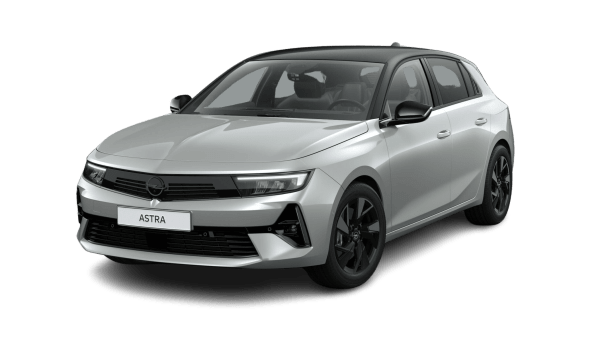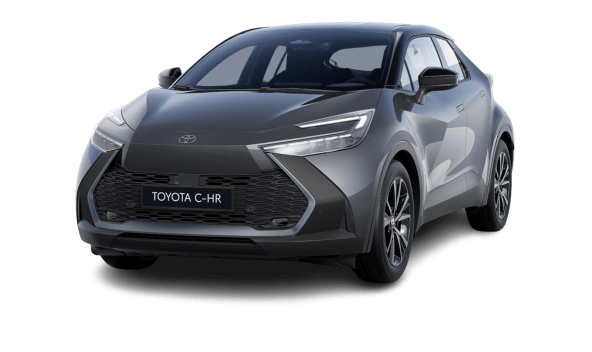What Are Acceptable Forms of Down Payment for a Car?
Want to know more about car down payments? Read on to learn about how they work, how much to budget, and how you can purchase a car without making a down payment.
Read time
7 minutes
Date
09.18.2023
Share
If you are looking to buy a new car, you have likely come across the term "down payment." As the phrase suggests, this is an amount of money that you pay to a dealership upfront, with the remaining cost paid via a financing agreement.
As a car buyer, your down payment can take various forms, including cash or even a trade-in on your current vehicle. The advantage of making a down payment is that it can help to reduce your monthly payments, but there may be other factors to consider, so it’s wise to explore your options.
For those who don't want to worry about making a down payment, a FINN car subscription may be a better alternative. With FINN, there is no down payment, and your monthly fee covers the car, insurance, and maintenance, and we'll even bring the car to your door.
Find your next car with FINN
How much should you put down on a car?
When making a down payment on a car, it is important to remember that the more you pay upfront, the less you will have to finance over the longer term. Not only will this mean lower monthly fees, but you will pay less interest over the term of the loan.
But how much is the right amount for a down payment?
Typically speaking, if you’re going to finance a vehicle, you should aim to pay as much as you can comfortably afford upfront. Depending on the cost of the car, you should aim to make a down payment of at least 20%, though it’s not unusual for a buyer to pay 30, 40, or even 50% upfront.
Another advantage of paying a higher percentage up front is that cars quickly lose value when they are driven off the lot. So, if you have made a lower down payment (or even no down payment at all), you could find that, over time, you owe more than the car is worth. This can be an issue if you want to sell your vehicle before the loan is repaid, or worse, if the car is totaled.
If vehicle depreciation is something you want to avoid, a FINN car subscription could be a good option. With FINN, you pay a monthly fee that includes the car, insurance, mileage, and maintenance. And once your six or 12-month term is up, you can easily swap to a new car and get back out on the road.
What forms of payment do car dealerships accept for down payment?
When it is time to make a down payment, most dealerships accept various forms of payment. However, it is useful to consider the pros and cons of each method before making that down payment.
Vehicle trade-in
If you already have a car and are primarily interested in buying a newer one, it may be possible to use your current vehicle to cover the down payment.
The main benefit of this approach is that you’re leveraging the value of something you already own, and so may not have to find the money elsewhere to cover your down payment. However, it’s important to remember that the dealership may not offer you the market price for your car, and it may therefore be more beneficial to sell it to a third-party and then use those proceeds to cover your down payment.
There are many free online resources that you can use to check the projected value of your vehicle, including the Kelley Blue Book. Additionally, there are numerous online and offline places that you can trade in your car for cash, if that is the right decision for you.
Cash
Cash is typically the most cost-effective way of making your down payment. With cash, you are more likely to be able to bypass a dealership's convenience fees, which can be as high as 4%.
Of course, one challenge of paying with cash is having that amount on hand. ATM transactions are typically limited to between $300 and $2,500 daily, while in-branch withdrawals are usually capped at $10,000 per day. Indeed, many car buyers may simply not feel comfortable carrying thousands of dollars in cash on their person.
Personal check
A personal check can be a good alternative for those who want to avoid paying credit card convenience fees but don't want to handle cash. Fortunately, most dealerships will accept a check for a down payment. However, it's important to note that they will typically require that it be in the name of the person buying the car. This means that a check from someone else, or even a business check with your name on it, may not be accepted. For this reason, it's advisable to speak with the dealership beforehand, just to make sure there are no problems when you try to pick up your vehicle.
Certified check
Some dealerships may not accept a personal check, but will take a certified check instead. A certified check is different from a personal check in that the issuing bank has verified that the funds are available in the account and has guaranteed that the check will be honored. If you do opt to use a certified check, your bank may charge you a fee, usually around $15.
Credit card
While it is common to use credit cards for everyday purchases, when it comes to making a car down payment, it is advisable to check with your dealership ahead of time to see if they accept them. This is because credit cards typically incur a merchant handling fee, which can be as high as 3.5%. Your dealership may pass those charges onto you in the form of a convenience fee.
Beyond dealership costs, it's also important to consider your credit card's annual percentage rate (APR). This is the rate of interest that your credit card issuer adds to your purchases. As a rule of thumb, most APRs fall around the 20-25% mark. In simple terms, a credit card balance of $100 (not accounting for repayment activity) becomes $125 if carried for 12 months. So, as you can see, using a credit card with a 25% APR to cover an $8,000 down payment on a $40,000 vehicle could incur significant interest costs.
Can you get a car with no down payment?
While there are clear benefits to making a down payment when buying a new car, some people may not have the desire or means to do so. Fortunately, most dealerships will allow you to still purchase a vehicle on finance. However, the downside is that you will likely pay more over the life of your loan. This is because you will have to borrow more money to cover the cost of the vehicle, and you will also likely pay more in interest charges.
With this in mind, you should certainly consider the overall cost of forgoing a down payment on a new car before taking this route.
With a FINN subscription, there is no down payment to worry about. And with a minimum credit score requirement starting at 640, FINN's application process is significantly lower than the 700 score that many dealerships require. Check out our $0 down car offers today.
Tips for buying a car with no down payment
If you decide to purchase a new vehicle without making a down payment, there are some things you can do to help manage the burden of higher monthly payments.
Consider adding a co-signer
Across the lending industry, interest rates are calculated based on a number of factors, including the likelihood of a borrower being able to repay their loan in full. This can be particularly true for those who don't have a significant credit history or have had payment defaults in the past.
Fortunately, many dealerships will allow you to add a cosigner (such as a parent or partner) to your loan agreement. This could lower your interest rate and make your monthly payments more affordable. However, it is important to be mindful of the fact that a cosigner also assumes responsibility for the loan. This means that if you default on your payments, the cosigner will be legally obligated to make them. Because of the shared debt burden, it is wise to fully consider the implications of this option with your potential cosigner before you sign any agreements.
Understand your right to return a financed vehicle
Some loan agreements allow you to return a vehicle to the dealership before your loan has been completed. This could be a suitable option if you find the car repayments too burdensome or your circumstances have changed.
It’s advisable to check with the dealership before you take out your loan agreement to see if you will be able to return your financed vehicle early, and whether there is a penalty for doing so. Many loan arrangements will include a clause outlining early termination fees (ETFs) and when they are triggered. The amount of an ETF will vary depending on the dealership and the terms of the loan. Being fully aware of such details will allow you to make informed decisions down the road.
Drivers who are concerned about being committed to a long-term contract could be better suited to a car subscription. With FINN, you can take on a new car for as little as six months, and at the end of the term you even have the option to move to a new vehicle.
Final thoughts
Making a down payment on a new vehicle is one of the smartest ways to reduce the overall cost of a car loan. However, understanding how best to cover that down payment can also save you money over the life of the loan.
A FINN subscription is a great alternative for those looking for their next car. Not only do you avoid the commitment of a long-term financing agreement, but you also get to bundle your insurance and maintenance coverage into your monthly vehicle payments.


Final thoughts
Making a down payment on a new vehicle is one of the smartest ways to reduce the overall cost of a car loan. However, understanding how best to cover that down payment can also save you money over the life of the loan.
A FINN subscription is a great alternative for those looking for their next car. Not only do you avoid the commitment of a long-term financing agreement, but you also get to bundle your insurance and maintenance coverage into your monthly vehicle payments.
You might also like

Enjoy Zero Down Cars with FINN
Are you looking for a 0-down car lease? This may be your solution. A FINN car subscription offers you the perfect alternative to 0 down car leasing – with no hidden costs and delivered right to your doorstep.

How to Take Over Car Payments
Are you in the market for a used car? Read on to find out how to take over car payments on a used car and everything you need to know about the process.

How Much Does It Cost to Lease a Car?
In 2023, the average monthly payment for leasing a car in the USA is $516. However, there are other costs that you should consider before opting for a leasing option. Here's what you need to know about the costs of leasing a car in 2023.








